Mongolian Food: Basic Overview
Common Ingredients
Common Cooking Methods
Courses
Meals
Key Taste
Eating Etiquette
Meal Presentation
Culinary Festivals
Influence and Fusion
Popular Types of Mongolian Food
-
Dumplings
In Mongolian cuisine, dumplings are a staple, often filled with meat such as beef, mutton, or camel.
These dumplings are enjoyed in various forms, steamed or fried, and are an integral part of celebrations and everyday meals alike.
The dough is typically wheat-based, and they are known for their unique shapes and cooking methods.
-
Fried dishes
Fried dishes in Mongolian cuisine showcase a love for hearty, meat-based foods.
They often include ingredients like beef, mutton, and various vegetables, seasoned and fried to perfection.
These dishes are a blend of traditional Mongolian flavors and cooking styles, showing the influence of the nomadic lifestyle on the cuisine.
-
Grilled and barbecued dishes
Grilled and barbecued dishes are a significant aspect of Mongolian cuisine, often prepared for special occasions.
These dishes involve unique methods, like cooking with heated stones inside the carcass of animals like goats or marmots.
The barbecuing technique infuses the meat with a distinctive smoky flavor.
-
Boiled dishes
Boiled dishes in Mongolian cuisine are simple yet rich, often consisting of boiled meat such as beef or mutton, sometimes including innards.
This method of cooking highlights the natural flavors of the meat, seasoned minimally, usually just with salt.
-
Snacks
Mongolian snacks range from sweet to savory, including items like dried or fried curds and butter cookies.
They often incorporate dairy products, reflecting the pastoral lifestyle of Mongolia.
These snacks are not just for casual eating but also play a role in traditional ceremonies and everyday life.
Mongolian dishes are delicacies that have been widely savored in Mongolia, deeply rooted in the country’s local culinary traditions.
Influenced by its extreme continental climate, these dishes primarily focus on dairy products, meat, and animal fats, while the use of vegetables and spices is minimal.
Moreover, due to Mongolia’s close historical and geographical ties with China and Russia, there are hints of Chinese and Russian flavors in their cuisine.
Each Mongolian dish provides details on its origin, category, ingredients, preparation, ideal serving occasions, and alternate names.
You can also discover the traditional food in Mongolia, its global recognition, and its healthy advantages. Furthermore, there are some key impacts on the cuisine, recommended drink pairings, and the differences between Mongolian and Chinese foods that await you to explore.
So keep reading and get ready to be impressed!
16 Popular Mongolian Dishes with Filters
Mongolian cuisine is not too famous but it’s interesting. With the top 16 dishes here, which are ranked for their popularity, you’ll learn about their key ingredients, tastes, dish types, or history. To make it easier for searching, you can also use the filter feature below.
I also provide some insights about most common, traditional, national, exotic dishes and street food culture here.
Dishes like buuz and khuushuur, made primarily with meat, are widely enjoyed in Mongolia and abroad.
Buuz, steamed dumplings filled with meat, is a national dish here, especially during Lunar New Year celebrations.
Reflecting the nomadic lifestyle, these dishes center around meat and dairy, with vegetables and spices being less common.
Less common due to the country’s nomadic culture, but urban areas offer simple, meat-centric street food like khuushuur.
Mongolian cuisine often uses the whole animal and practices of nomadic life, resulting in some exotic specialties.
Buuz
- National
- Traditional
Buuz is a type of steamed dumpling traditionally enjoyed during Mongolia’s New Year (known as Tsagaan Sar). However, people eat these dumplings all year round. Nowadays, you can find buuz in many restaurants and cafes in the capital, Ulaanbaatar.
Buuz’s origin is from a similar breakfast dish in China called baozi. Buuz often consists of minced beef or mutton, mashed potato, cabbage, or rice. The filling is well-seasoned with fennel seeds and herbs, then wrapped with a dough cover and steamed.
In the lead-up to the Mongolian New Year celebrations, which typically occur in February, buuz is prepared in large quantities. They are often left outside to freeze and are later consumed with salads, fried bread, Mongolian tea (suutei tsai), and vodka.
Buuz dumplings look special because they have a small opening on top that shows what is inside. They’re steamed and then eaten with your hands, with the doughy pocket holding all the tasty meat juices.
Khuushuur
- Street Food
- Traditional
Khuushuur is a fried meat dumpling that has been a part of the Mongolian diet for centuries. It has a deep connection with Mongolia’s nomadic traditions and culinary heritage.
In contemporary times, khuushuur is not only a beloved dish during family gatherings and festivals but also a popular street food. It is notably served during the traditional Mongolian festival called Naadam.
The primary ingredients include dough and meat, which can be beef, mutton, or camel. The meat is seasoned with onions, salt, and sometimes garlic. The dough, made from wheat flour, is shaped into a circle and folded in half around the meat filling. It is then either ground up or deep-fried.
While the traditional version contains meat, there are alternative preparations where the meat filling is replaced with vegetables like carrots, cabbage, or mashed potatoes. Once prepared, khuushuur can be eaten as it is or paired with condiments like ketchup or Maggi sauce.
Tsuivan
- Traditional
Tsuivan is a traditional Mongolian dish primarily composed of noodles, meat, and vegetables. Tsuivan is of Mongolian origin, and its name is believed to be derived from the Chinese term 炒餅 (chǎobǐng), which translates to “fried shredded pancake.”
Locals use hand-made wheat flour to make the noodles in Tsuivan. The meat is usually mutton, but it can also be substituted with horse meat, beef, or pork, with some veggies like carrots and onions in long strips.
There are two prevalent methods for preparing the noodles used in Tsuivan. One method involves rolling the dough into a circle, oiling it, rolling it back onto itself, and then steaming it. Once steamed, the dough is sliced into strips.
The alternative method is to roll the dough into a circle, frying it like a pancake, and then cut it into strips.
The noodles are typically added to the stir-fried meat and vegetables. Depending on the noodle preparation method, water might be added to soften the noodles with steam (for fried dough) or cook them (for undercooked steamed noodles).
Guriltai Shul
- Traditional
Guriltai shul is one of the most famous noodle soups in Mongolia that has been enjoyed for a long time. Guriltai shul in Mongolian means “noodle soup”. The noodles in this dish are not determined by any standards – they can appear in any size and shape.
There is a must-try special variation of guriltai shul called tasalan suriltai shul, which consists of only soup with hand-cut flat pieces of dough. The soup is from boiled beef or lamb bones with harmonious seasonings.
Boodog
- Exotic
- Traditional
Boodog is a traditional barbecue dish from Mongolia primarily made using goat or Tarbagan marmot as its main ingredient. The dish is barbecued with a distinctive method where heated stones are inserted into the animal’s carcass.
Boodog is not an everyday dish but is typically prepared for special occasions. The meat, sometimes accompanied by vegetables, is cooked either in sealed milk called “khorkhog” or within the de-boned body of the animal itself.
Tarbagan marmots, when used for this dish, are usually hunted in the fall. This is because the marmots are larger during this time as they have been preparing for hibernation.
Khorkhog
- Exotic
- Traditional
Khorkhog is a unique Mongolian dish from the 20th century. Lamb is the most common meat used, but you can also use goat meat. The meat is cut into good-sized pieces, and the bones are left on.
To make this dish, you heat up large stones over a fire until they’re really hot. These hot stones and the meat are put into the cooking container. Many people use metal milk jugs as the traditional cooking pot for khorkhog.
When the dish is cooked and ready to eat, the meat is shared out, and the hot stones are passed around. People believe these stones are good for health. Usually, everyone just uses their hands to eat, but you can use a knife to cut the meat off the bone if you like.
This dish is a twist on boodog, an older Mongolian meal. Even though khorkhog is loved in the nation, it’s not commonly found in restaurants.
Borts
- Traditional
Borts is a traditional Mongolian dish made by the method of preserving meat by air-drying. Fresh meat is cut into long strips and hung in a ger (yurt) for about a month until it becomes dry and hard.
The dried meat can be broken into small pieces or ground into a coarse powder. This preservation method significantly reduces the volume of the meat. However, Borts can be stored for months or even years in a linen bag in Mongolia’s dry climate.
Modern industrial methods produce borts that can be purchased in paper bags, but many believe that the taste of traditionally made borts is superior. Borts are considered more nutritious and flavorful than other modern field rations.
There’s a traditional belief that borts, when dried for three years and ground into a fine powder, can be so concentrated that the meat of an entire cow can fit into a cow’s bladder. This concentrated form can nourish multiple people in soup form.
Boortsog
- Traditional
Boortsog is a traditional fried dough food found in Mongolia and other areas like Central Asia and the Middle East. It has different names, such as boorsoq and baursak.
Boortsog can be triangle-shaped or even round. Its dough mainly has ingredients like flour, yeast, milk, eggs, butter, sugar, salt, and margarine.
While Mongolians often fry boortsog in mutton fat for a unique taste, you can also use vegetable oil. You can enjoy boortsog as a sweet treat with syrup, jam, or honey.
They’re similar to cookies or biscuits. Because they’re fried, some people think of them as doughnuts. Many Mongolians and Turkic folks like dipping boortsog in tea.
Ul Boov
- Traditional
Ul boov is a traditional Mongolian biscuit specially prepared by Mongolians for the country’s Lunar New Year. The name “ul boov” translates to “shoe soles” in English. The biscuit is assembled in layers, and the number of these layers signifies the status of the family.
Each biscuit is stamped with a distinct design for a particular family. This design is imprinted using a wooden block and is a tradition passed down through generations.
On the Mongolian Lunar New Year, families come together to make large quantities of ul boov, which is reserved for both dessert and presentation during the festival.
Uuz
- Exotic
- Traditional
Uuz is a traditional Mongolian dish commonly found on the Tsagaan Sar table. It’s not only reserved for festivals but is also served at special events like weddings. The dish has been a part of Mongolian cuisine since ancient times.
The main ingredient is the back of a mature sheep, especially the fatty part around the tail. This is stewed for around five hours until it’s tender and ready to eat.
During the meal, families slice up the mutton and share it among their guests. Any remaining uuz is divided and given to relatives after the celebration.
Bantan
- Traditional
Bantan is a traditional Mongolian soup often eaten for breakfast, especially after a night of drinking. Bantan is a quick and easy dish made with tender beef or lamb and small bits of dough. The soup is thick and creamy, similar to porridge, with meat, spring onions, and dough pieces.
The dough helps give the soup its rich texture. It’s so gentle and nutritious that some moms offer it as the first food for their babies. Many locals also turn to bantan for relief after overeating or to help with hangovers.
Bansh
- Traditional
Bansh is a type of dumpling often served during special occasions and celebrations in Mongolia. Made from beef or mutton, it’s enhanced with onions, garlic, and spices. This treat can be boiled, steamed, or fried.
Bansh typically pairs with soup, bouillon, or milk tea, but can also stand alone with accompanying sauces.
Budaatai Huurga
- Traditional
Budaatai huurga is a simple yet hearty meal enjoyed in Mongolian cuisine for generations. Besides fried rice and meat, budaatai huurga contains many other ingredients like eggs, cumin, carrots, soy sauce, bell peppers, etc.
In case there’s no beef, you can replace it with lamb. The leftover cooked rice can also be used to make this dish, but it is preferable to use freshly cooked rice for the best quality.
Chanasan Makh
- Traditional
Chanasan makh is a traditional and ubiquitous dish of Mongolia that includes boiled beef or mutton and innards. Chanasan makh will be served when there is a special guest or an important occasion.
The meat will be sliced into chunks and boiled with salted water. When it gets tender, it’s time to take it out and serve. The family’s head or that special guest will be the one who takes the first portion of the dish, which shows the respect of the family to him or her.
Eezgii
- Traditional
Eezgii is a type of roasted fried curd enjoyed in Mongolia for years. Eezgii is basically made from cooked milk with a small amount of yogurt or kefir (Russia’s popular fermented milk drink) and must be roasted to get golden pieces as the final product.
This fried curd has a mild sweet taste and is usually eaten as a dessert or snack between the primary meals in a day. You will feel the chalky texture right when eezgii gets onto your tongue.
Aaruul
- Traditional
Aaruul, also known as khuruud, is a dish that originates from Mongolia and is a significant part of Mongolian cuisine. Aaruul is primarily made from yogurt and salt and can be made in various forms, such as being rolled into balls, sliced into strips, or formed into chunks.
Aaruul is made by shaping and letting yogurt dry, which gives it its distinct texture and taste. People can consume them raw by chewing or in liquid form by soaking them in a glass of water and letting them dissolve to make a delicious beverage with high-calcium content.
Due to its drying process, aaruul can be stored for extended periods, making it a valuable food source, especially in regions with harsh climates like Mongolia.
Aaruul is traditionally served during special occasions and is often combined with other dishes. Exhibiting features of traditional Mongolian foods, aaruul can be served during the Mongolian New Year.
What Are The Influencers on Mongolian Dishes?
There are three main factors that impact on Mongolian cuisine.
These factors have shaped the culinary traditions, which continue to evolve while maintaining its core identity. Next, if you don’t know how to enjoy dishes with drinks like a local, don’t miss out on the following section.
Which Beverages to Pair with Mongolian Dishes?
When enjoying Mongolian dishes like buuz, khuushuur, or borts, the following drinks can complement the flavors and enhance the dining experience:
Mongolian dishes are best savored when paired with beverages. This is similar to how Chinese foods, one of the key influencers on Mongolian cuisine, are often complemented by customary drinks.
What Is The Difference Between Mongolian Dishes and Chinese Dishes?
Chinese and Mongolian cuisines each have unique features that differentiate them. These differences can be seen in 6 key aspects as below:
Mongolian Dishes
Chinese Dishes
In summary, while Mongolian foods are heavily influenced by its nomadic culture and harsh climate, focusing on meat and dairy, tasty delicacies of China are diverse and vary greatly across its vast regions.
If you’ve found this exploration as captivating as mine, I urge you to like, share, and comment below. Let’s keep the conversation about Mongolian gastronomy alive and inspire more to discover its wonders.

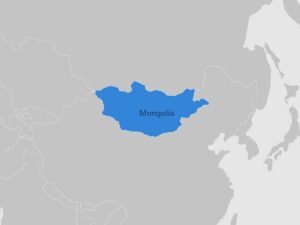
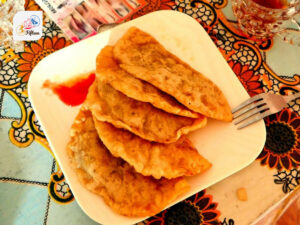
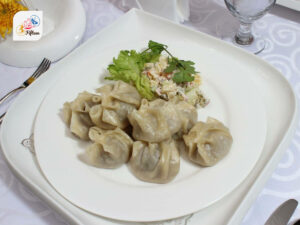
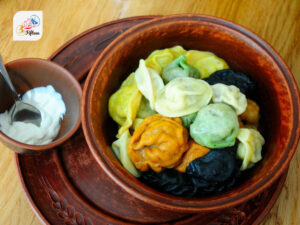
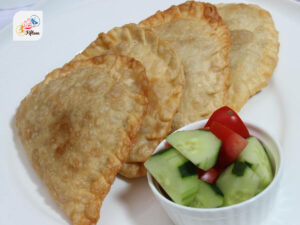
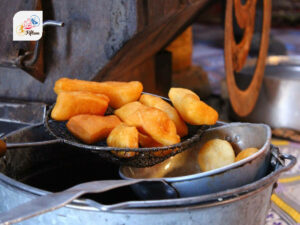

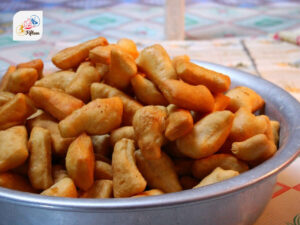
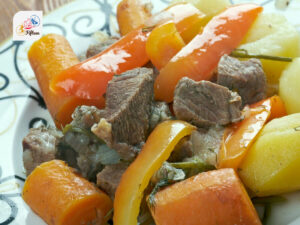
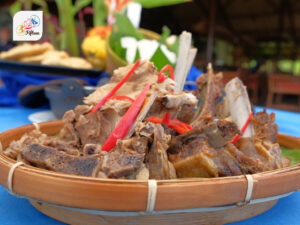
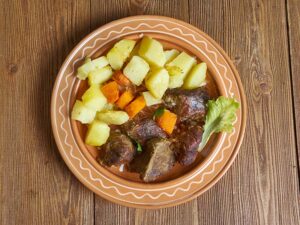
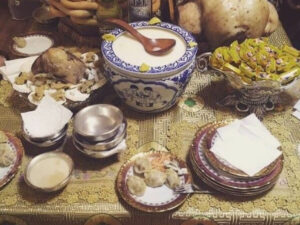
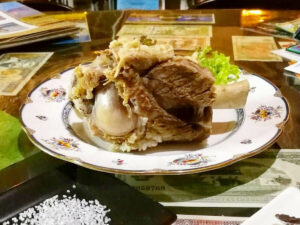
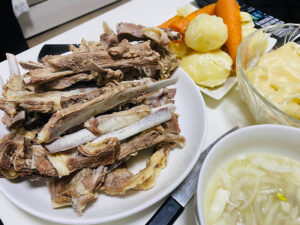
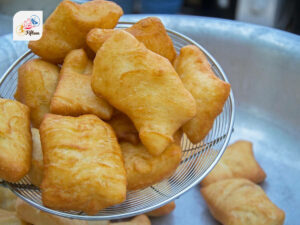
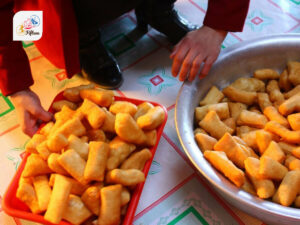
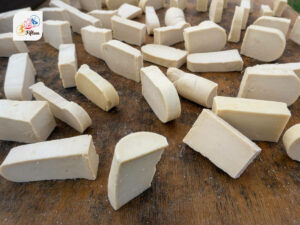
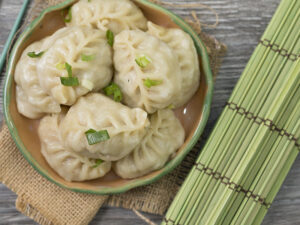
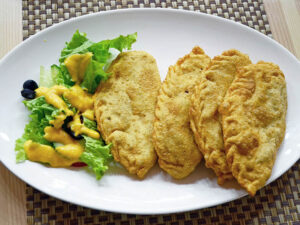
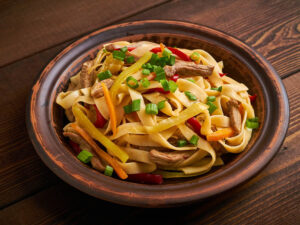
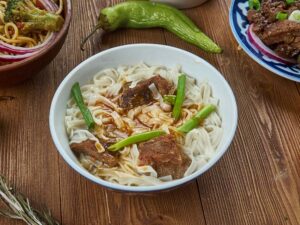
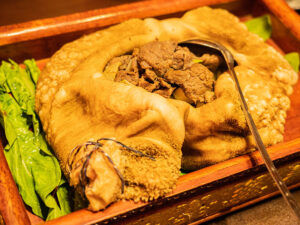
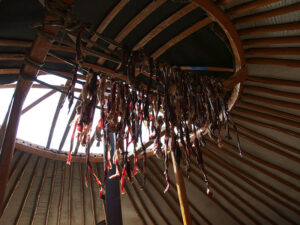
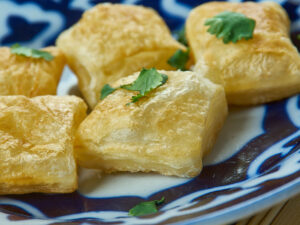
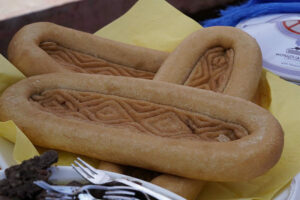
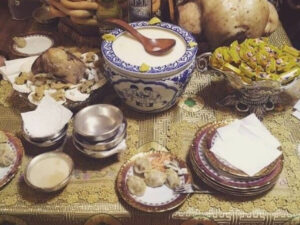
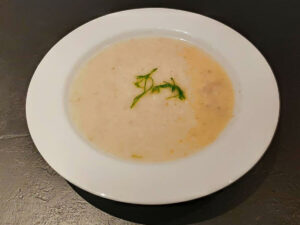
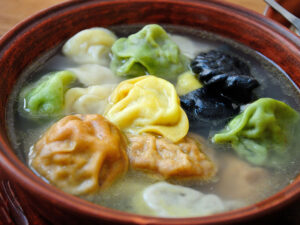
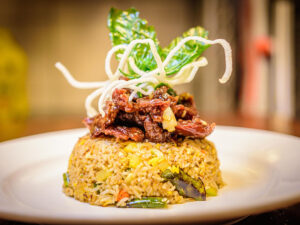
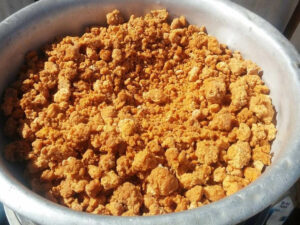
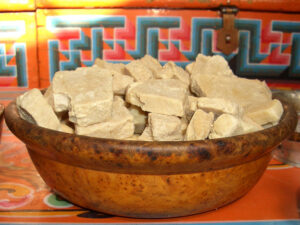
Jamie Scott
Editor in Chief, Senior Content Writer
Expertise
Home Cooking, Meal Planning, Recipe Development, Baking and Pastry, Food Editor, Cooking-video Maker, Western Food Evaluation Expert
Education
Le Cordon Bleu College of Culinary Arts
Local Community College, New York, NY
Jamie Scott is a skilled culinary expert and content creator specializing in Western cuisine. With over 15 years in the culinary field and formal training from Le Cordon Bleu, Paris, Jamie deeply understands how to blend nutrition with delicious flavors. His passion for cooking matches his commitment to making healthy eating accessible and enjoyable.
On Fifteen.net, Jamie brings a fresh perspective to classic dishes and beverages, offering readers insightful recipes, cooking tips, and a fresh view on meal planning that emphasizes taste, health, and simplicity.